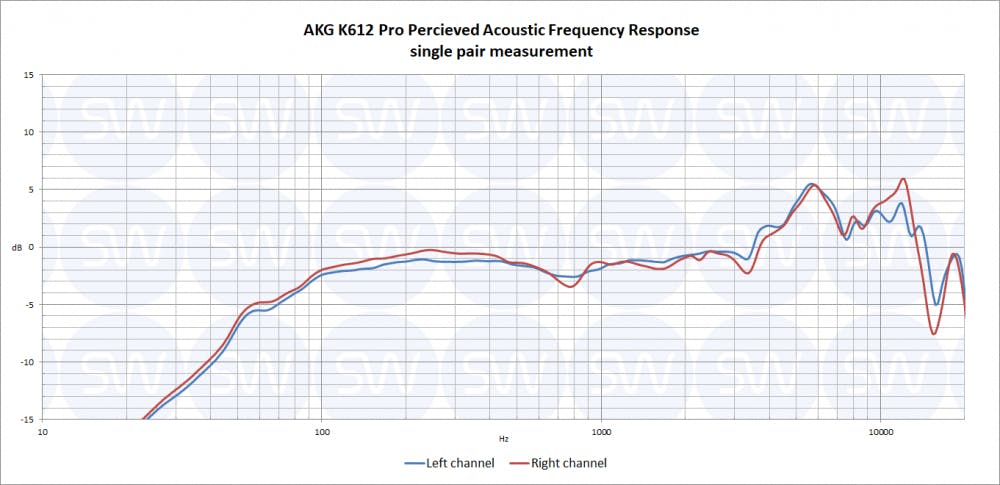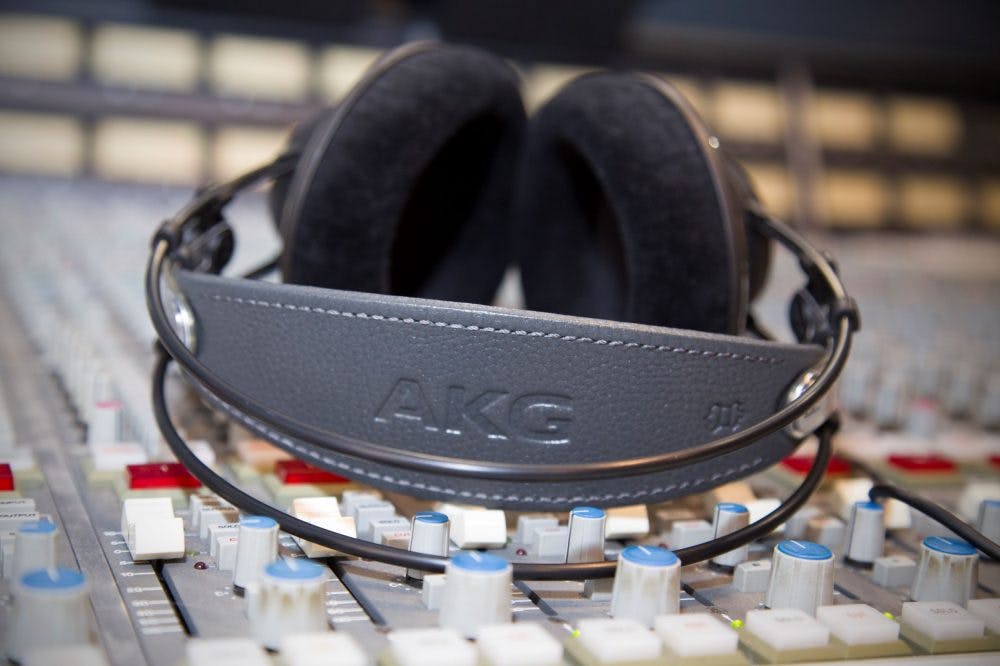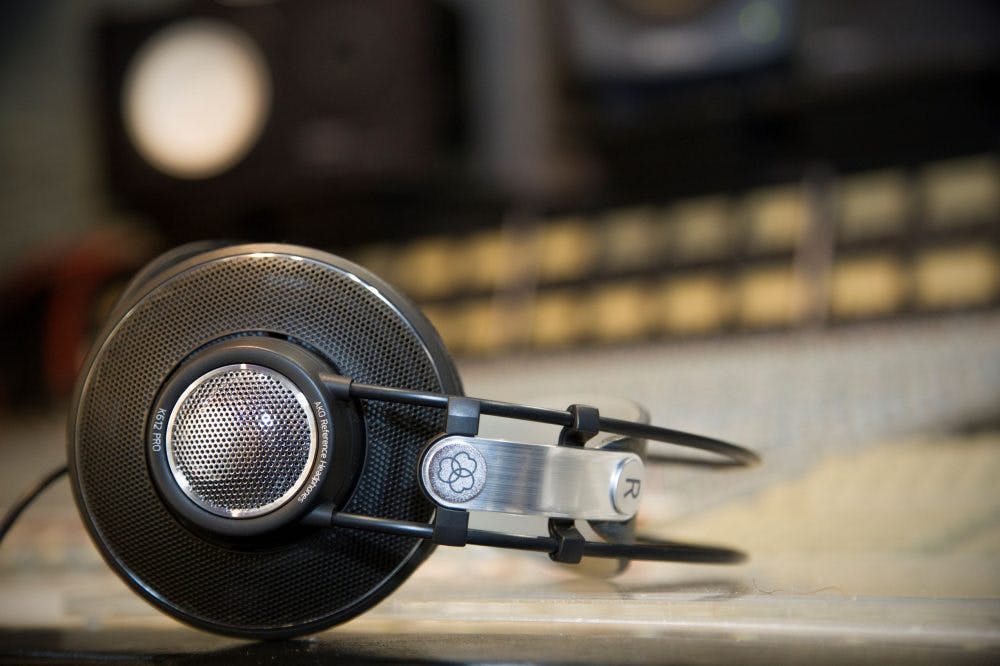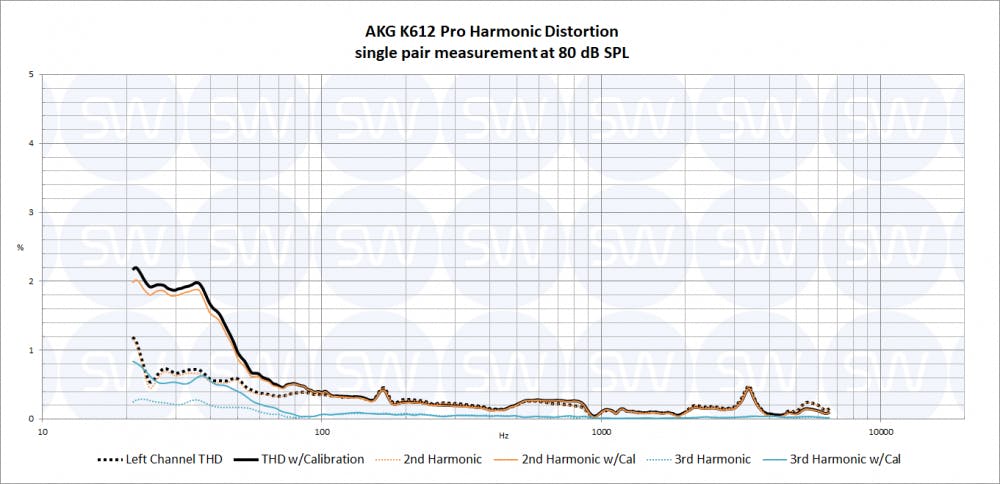When it comes to popularity, K612 Pro is eclipsed by its more premium AKG sibling K712 Pro. We think it deserves way more love and attention, as it delivers nearly everything one might look for in mixing headphones, yet manages to keep the cost down.
- Neutral sound out-of-the-box
- High value
- Top adaptiveness
Pros list with SoundID Reference calibration
- Greatly increased sub bass extension
- Non-detachable cable
- Weak sub bass extension
Despite the not-so-high impedance of 120Ω, with K612 Pro you’ll achieve lower volume levels from mobile devices than you might expect. Some work that doesn’t require massive headroom still could be done with the headphones plugged straight in the device’s built-in soundcard but you’ll be way better off using an audio interface or headphone amp to drive them.
At a glance, they’re very similar to K712 Pro. Both share the same Varimotion™ 2-layer diaphragm and also the weight of both units is identical at very low 235 g.
K612 Pro follows all classic AKG design traditions – it has the auto-adjusting “hammock” style headband that stems from the nearly cylindrical driver housings, that also host the large swiveling ear cups with thick, round ear pads attached to them. The nearly all-plastic build trades robustness for low weight and comfort. Few tiny components attaching the headband to the rails don’t inspire confidence to throw them carelessly in a backpack – better just keep these headphones in the studio.
But all this is just nitpicking, the only major drawback is the rather thin, non-detachable cable, which already failed on one of our pairs.
Now to the best part – there aren’t many headphones out there that can compete in flatness with the K612 Pro. The 100 Hz to 3 kHz stays within 2dB, and the increase in higher frequencies reaches only a relatively moderate 5dB, beating one of its main rivals Beyerdynamic DT 880 Pro. The mid-range will sound very natural with only negligible coloring and the high end boost will not translate to overly harsh sound.
Channel balance is very good. To be fair our sample pool was way more limited than that of more popular models, but out of those, the worst issue was a 2dB disbalance at the bottom-end for a single pair. For the rest of the samples, the channels were quite evenly matched only with few narrow frequency band issues at the very top end of the spectrum. Overall a commendable result, especially for its price class.
The headband is a little bit stiffer and ear pads not as plush as K712 Pro’s, yet K612’s are still plenty comfortable which is rare in its price class. None of our testers found any obstacles to wearing them for hours.
There are many reasons to like the AKG K612 Pro, the fact that you can get them in Europe for about €100 being one of them. They’re double the price in the States, which, frankly, still is a rather good deal. The main reason keeping them from receiving top marks here is the non-detachable cable.
Out of the box, these AKG’s are pristine with no distortion throughout the spectrum. It’s not that surprising though given that usually with modern headphones if there is any distortion, then it’s down low in the sub bass region, and since the K612 Pro bass response and extension is weak, the drivers don’t struggle with distortion to reproduce the low frequencies – they barely reproduce them at all! This is where calibration comes to the rescue with a massive 10dB boost in the sub bass, which also introduces some 2nd harmonic distortion, but, luckily, the numbers stay reasonably low and it leads to no audible artifacts, the sound remains clean.
How accurate and consistent is the correction effect among different listeners?Poor adaptiveness – the failing of delivering the same perceived frequency response to a wide range of listeners – is the number one reason why we usually recommend headphones from other manufacturers over AKG offerings for use with SoundID Reference. K612 Pro manages to reverse this trend, as they deliver superb adaptiveness and are among the best in this regard, not only among AKG models!
How much do they differ pair to pair in terms of frequency response?The consistency among our sample pool is great with deviations throughout most of the range not exceeding 3dB. This also leads to the model average calibration profile being highly accurate in delivering neutral perceived frequency response.
Rating
Conclusion
High comfort, natural sound, low THD, great adaptiveness, and at the time of writing, K612 Pro’s in Europe can be had for a bit over €100, which makes them the most affordable great open-backs. In other regions, they can cost up to twice as much which still is a fair price, considering what’s on offer. Pair them with SoundID Reference calibration to iron out the few frequency response issues and introduce sub-bass, and nothing can stop you! Nothing apart from a cable failure, that is, so it’s best if you know your way around a soldering iron.
For more information about AKG headphones, please read our other reviews – AKG K371, AKG K712 Pro, and AKG K240.
Continue to discover our top recommended PRO studio headphones in our Top 30 list.
Final Rating
Calibration Enabled
Calibration









